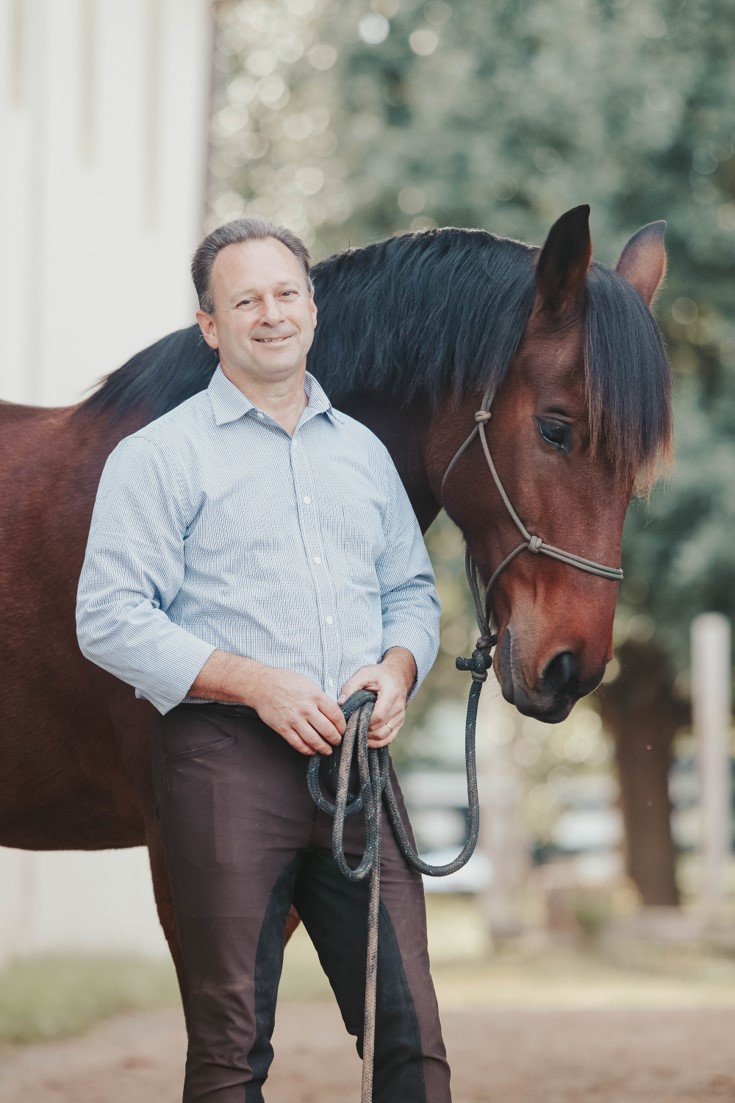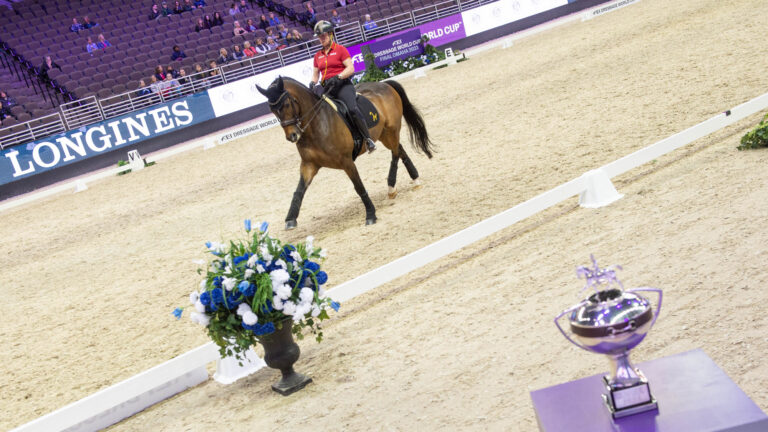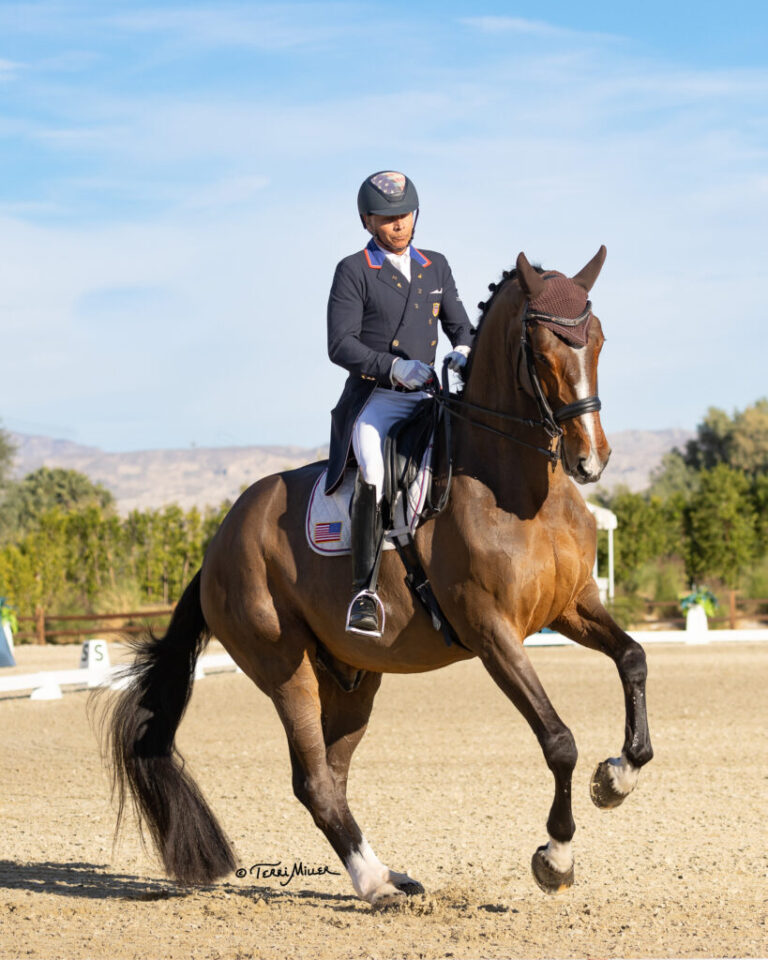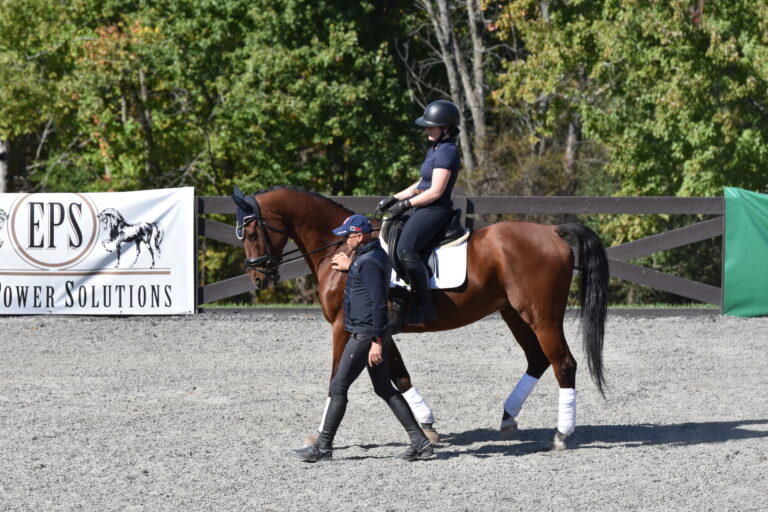What are your riding goals for the new year and how do you plan to tackle them?
Sport psychology, particularly as it applies to riding, is such an interesting topic. I like to learn more about it whenever I can. So, when I heard that my friend and Maryland-based trainer Abby Gibbon was hosting a sport psychology lecture series with Paul Haefner, Ph.D., of Riding Far, LLC., at her nearby Fine Idea Farm, I was eager to attend.

December weather in Maryland isn’t really ideal for riding, but it did offer a wonderful excuse to gather with other curious minds in Abby’s cozy Victorian farmhouse. With donuts and coffee in hand, we scribbled down notes on this session’s topic: Goal Setting and Goal Attainment. Following are some highlights that I would like to share with you.
1.Small accomplishments are still accomplishments. Haefner began the session by asking each person in the room to share two things: a riding goal they achieved this past year, and something they achieved that morning (it didn’t have to be riding-related). I shared that I earned my USDF bronze medal, which was something I had been really focused on for the past couple of years. I also explained that on a larger scale, I was just proud of myself for setting aside my performance anxieties and getting into the show ring. I struggled to think of something I had achieved on the morning of the lecture, so, I just said I was happy that I made it to Abby’s farm on time! Other riders in the room mentioned a variety of accomplishments, which ranged from jumping a full course of jumps, to earning scores at Second Level, to riding a clean cross-country course. Their accomplishments on the day of the lecture included cleaning a bathroom and feeding horses breakfast in record time. Haefner’s point in all of this was that goals don’t always have to be big. “When we think about goals, we think about these really big things,” he said. “The reality is that goals can be big things and they can be really small things. Small accomplishments are still accomplishments. Big accomplishments are made up of small accomplishments.”
2.It’s human nature to be critical. He went on to explain that it’s simply human nature, when we are faced with a setback, for us to dismiss our accomplishments. “One of the things human beings do consistently is that we critique ourselves and easily dismiss any sort of progress,” he said. “We are always primed to look for the negative and we are also primed to interpret that as lack of progress toward our goals.”
3.When you set a goal, use positive language to phrase it. “The goal you are shooting for needs to be stated in a positive way,” Haefner said. For example, if you want to improve your sitting trot, state your goal as “I would like to sit more quietly in the sitting trot” instead of “I don’t want to bounce as much in the sitting trot.” Positive phrasing is important because it helps your brain focus on the right idea. If someone were to tell you “Don’t think about a pink elephant,” you would automatically picture a pink elephant. Focusing on what you don’t want practices what you don’t want. Focus on and practice what you want instead.
4.If we set goals in such a way that it makes the first step difficult, it is unlikely that we will attain the goal. For example, getting out of bed is actually an important accomplishment because if you don’t do that, nothing else gets done.
5.Remember that goals are helpful tools, but they do not exist in isolation. In order to attain our goals we also need positive motivation, appropriate resources and supportive relationships.
6.Think about goals as a steering wheel. They channel energy and provide direction.
7.Haefner broke down the nature of a “good” goal into pieces. A good goal is:
Specific. Specific goals help to hone direction.
Measurable. This allows us to asses our progress. Goals must be measurable so that we don’t fall victim to our inner critic. However, you must be aware of where the shortcomings in your metrics might be. For example, dressage scores might not always be the best way to evaluate progress because they can be subjective. If you’ve ever ridden in front of multiple dressage judges, you know that they all hardly ever assign the exact same score to the same ride.
Attainable. Setting goals that are attainable counteracts the risk of feeling demoralized. Ask yourself if your goal is achievable given the resources that you have and if you have the motivation to get it done. “People end up feeling demoralized when they have goals that aren’t achievable,” he said. It was here that he also underscored the importance of relationships when it comes to setting goals. “Relationships play an important role in helping us achieve our goals and helping us decide if goals are attainable. This is where it’s really important to work with an expert who you trust, who says whether a goal is attainable or not.”
Relevant. Is the goal relevant to what you want to accomplish? Trainers and mentors are especially important in this way, too, as they can help us determine what goals are relevant to our progress.
Time-bound. Assigning a time frame to your goal lights a fire underneath you and can help increase motivation. Remember, the element of time should not be there to force a result. “We aren’t working with a machine or a simple process,”
Haefner said. “It’s about keeping us moving forward rather than thinking about ‘I have to have this done by a certain date.’”
8.Goals have multiple dimensions and can exist in various ways. For example, goals can be implicit (maybe just an idea that lives within you) or explicit (a specific idea written down on a piece of paper). They can also be internally driven or externally driven. They can be long-term or short-term. They can also be outcome goals or process goals. “Scores on a test are outcome goals,” Haefner said. “Winning a blue ribbon is an outcome goal. These are meaningful, fun and inspiring. But at the end of the day you don’t get to control outcomes. It’s really helpful to have the majority of your goals be process goals which involve focusing on progressive improvements through education and training of you and your horse.”
9.Riding is complicated, so break things down. “Riding is a complex endeavor,” he said. To grasp how complicated it really is, he suggested we consider it in this way: “Just think about what goes on inside of you (cognitively, emotionally, physiologically, etc.) and then you add a required skill set and then you add another sentient being (the horse), and then the sentient being has all of these physical and technical things they’re supposed to be able to do and then, on top of it, you have a trainer, or someone who teaches you. When you think about goal setting, it’s really, really helpful to think about it in terms of multiple things. We might have an overarching destination, but it’s really important that we start breaking things down.
10.Try mind mapping. Mind mapping is a way of visually breaking down and organizing multiple goals as well as the plans and action steps you need to attain them. This can help prevent you from being overwhelmed when you’re dealing with goals as complex as riding goals. (He likes to use a site called Simple Mind. Check it out here.)
11.Prepare for horses to be, well, horses. During the session, we spent a lot of time discussing the nature of life with horses—about how and when things go wrong despite the goals we set. There were riders in our group who explained that they hadn’t met any of their goals in the past year because they lost a horse or had to abandon competition goals because of an unexpected challenge. “There is people time and then there is horse time,” Haefner said. “I don’t think I’ve ever known of horse people being successful when they were working on people time.”
He reminded us that it’s important to develop realistic beliefs around what is within your control in life. “Isaac Newton said that things that happen in the world can be described by mathematics. If something happens, there is a logical cause. This works well when you are trying to figure out how to brake a car, but when you’re trying to use A+B = C logic, that doesn’t always predict outcomes with horses.”
Paul T. Haefner, Ph.D. is a licensed clinical psychologist in private practice in Northern Virginia with over thirty years of professional experience. In 2001 he created Riding Far, LLC to provide a wide range of sport psychology consultation services to riders, instructors and trainers. His goal is to raise riders’ awareness of the importance of mental and emotional skills in equestrian sport and to help equestrians of all ages, skill levels, and disciplines achieve their personal riding goals.
Haefner has combined his love for horses and lifelong equestrian experience with his knowledge of human psychology in order to help people raise their level of performance and overcome many of the innate challenges that arise when participating in equestrian sport. In additional to his work with individuals, Haefner presents seminars and clinics customized to the needs of specific groups of riders from a wide range of equestrian disciplines.
Abby Gibbon owns and operates Fine Idea Farm, a small dressage and eventing facility in Mt. Airy, Md., with a focus on pioneering a new model of training for the thinking rider. Exploring sports psychology, theory and the latest multimedia technology, she aims to provide a dynamic, all-encompassing program for equestrians both in and out of the saddle. In addition to regular clinics, the farm also hosts an equestrian book club for boarders and friends.











